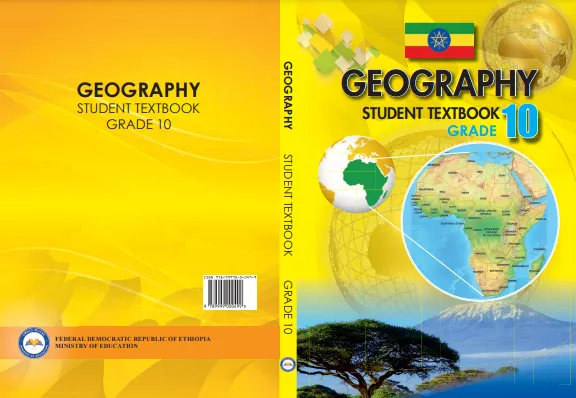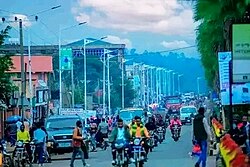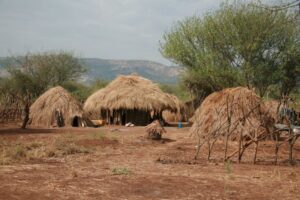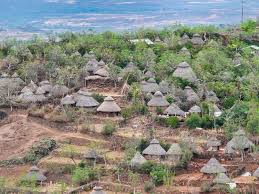The Ministry of Education (MoE) of Ethiopia has published a new Grade 10 Geography textbook for the 2023/24 academic year. The textbook is written by Wondafrash Genet Degu (M.A.) and Kenate Worku Tabor (Ph.D.) and edited by Sintayehu Teka (M.Sc.) (Content Editor), Kassie Molla (M.A.) (Language Editor), Hirut Woldemichael (M.A.) (Curriculum Editor), Agenchw Nega (M.Sc.) (Illustrator), and Geda Hoka (M.A.) (Designer). The textbook was evaluated by Dereje Guteta (Ph.D.), Tesfaye Shiferaw (Ph.D.), Abebe Yibeltie (M.A.), and Hussein Seid (M.A.).
To download the PDF of the new Ethiopian Grade 10 GEOGRAPHY textbook, please click button below.
12 MB
The textbook is divided into eight units:
- Landforms of Africa
- Climate of Africa
- Natural Resource Base of Africa
- Population of Africa
- Major Economic and Cultural Activities of Africa
- Human – Natural Environment Interactions
- Geographic Issues and Public Concerns in Africa
- Geospatial Information and Data Processing
Each unit covers a range of topics related to the geography of Africa, including:
- Unit 1: The major landforms of Africa, such as the Great Rift Valley, the Sahara Desert, and the Ethiopian Highlands.
- Unit 2: The climate of Africa, including the different climate zones and the impact of climate change.
- Unit 3: The natural resources of Africa, such as water, soil, minerals, and vegetation.
- Unit 4: The population of Africa, including the population growth rate, population structure, and population distribution.
- Unit 5: The major economic and cultural activities of Africa, such as agriculture, industry, tourism, and language.
- Unit 6: The relationship between humans and the natural environment in Africa, including the impact of human activities on the environment and the role of indigenous knowledge in conservation.
- Unit 7: Geographic issues and public concerns in Africa, such as unplanned urbanization, migration, and coastal pollution.
- Unit 8: Geospatial information and data processing, including the basic concepts of geospatial information, sources and tools of geographic data, and geographic data representations.
The textbook is well-written and informative, and it is accompanied by a variety of maps, charts, and diagrams. It is a valuable resource for students of geography and anyone interested in learning more about the geography of Africa.





